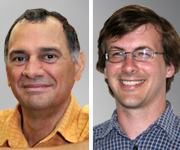THERE are positive signs that we are closing the gap in life expectancy for Aboriginal and Torres Strait Islander people, but empowerment and self-determination still hold the key to ultimate success.
The 2009–10 report on Aboriginal and Torres Strait Islander primary health care services, funded by the Office for Aboriginal and Torres Strait Islander Health (OATSIH), reinforces the need for Aboriginal community-controlled health services, highlights the sector’s successes and provides pathways for future direction.
Redfern Aboriginal Medical Service in Sydney, Australia’s first community-controlled health service, was established in 1971 in response to neglect and racism in mainstream health services. There are now 223 OATSIH-funded Aboriginal and Torres Strait Islander primary health care services with almost half a million clients around the country.
In the 12 months since the previous report, the number of services has increased by 9%, episodes of care have increased by 14%, and there has been a 22% increase in the number of clients.
However, these increases were not geographically uniform. Of great concern is that the number of primary health care services, stand-alone substance misuse services and Bringing Them Home counsellors (who provide counselling to those affected by past forced removal practices) all fell significantly in the Northern Territory compared to the previous year. How can this have happened, given that the Northern Territory Emergency Response aimed to provide more services and deal specifically with alcohol and kava misuse? Has this funding been directed to other areas of health care service delivery?
Tackling the gap in mortality between Aboriginal and Torres Strait Islander people and non-Indigenous Australians must involve efficient and effective systems to deal with chronic disease in the primary health care setting. It is, therefore, encouraging to see almost all services using computers, with the number using electronic client records increasing by 10% on the previous year, to 86%.
Electronic recall and reminder systems enable health services to provide highest quality chronic disease management but only 73% of services use such systems — yet this is an area where significant gains could be made.
Even more important is the prevention and early detection of chronic disease — a key function of the well-person checks. However, only 73% of services are providing well-person health checks compared to 80% the previous year. While services may provide some coverage, Medicare data indicate that uptake of the relevant Medicare item number (715) is surprisingly low, suggesting the need to enable services to develop and implement systems to increase access to well-person health checks to all clients.
Self-determination and empowerment are crucial to the success of the community-controlled health sector and we are concerned that 9% of primary health care services and 17% of stand-alone substance use services (an increase from 9% in the previous year) had no Aboriginal or Torres Strait Islander people on their governing committees or boards.
The proportion of board members who receive governance training needs to increase from the current 74% to ensure all board members are empowered to avoid the pitfalls of governance and maximise the impact of their advice for the benefit of their community. There may be a role here for government in funding appropriate training.
This latest report reinforces the massive workforce issues faced by the sector. Just over half of services reported a job vacancy — a total of 295 vacant full-time-equivalent positions; the largest proportion of these being for Aboriginal health workers.
Nurses have a crucial role in supporting the sector, especially in remote and very remote locations. However, only a small percentage of nurses (10%) and doctors (5%) were Aboriginal or Torres Strait Islanders and this level has not changed compared to the previous year. Ongoing support for Aboriginal and Torres Strait Islander medical and nursing students is a critical part of closing the gap.
Overall, this report shows the community-controlled sector is providing services vital to closing the gap in life expectancy for Aboriginal and Torres Strait Islander Australians. There are positive signs about the sector’s growth and direction, but this report highlights areas where improvements could be made and begs some important unanswered questions.
Dr Noel Hayman is an associate professor at the School of Medicine, University of Queensland, and clinical director of the Inala Indigenous Health Service, Queensland. Dr Geoffrey Spurling is a senior lecturer in the Discipline of General Practice, University of Queensland, and senior medical officer, Inala Indigenous Health Service.
This article was written with the assistance of Dr Deborah Askew, senior lecturer in the Discipline of General Practice, University of Queensland, and research director at Inala Indigenous Health Service.
Posted 21 November 2011

 more_vert
more_vert

ON a related topic, I am a regionally based physician working in addictions with about 25% of my patients identifying as Aboriginal. Yet, should I prescribe any general medication for an intercurrent or ongoing issue, I am unable to avail myself on my patient’s behalf of the Closing the Gap subsidy for prescribed medication.
Where is the sense in the that?